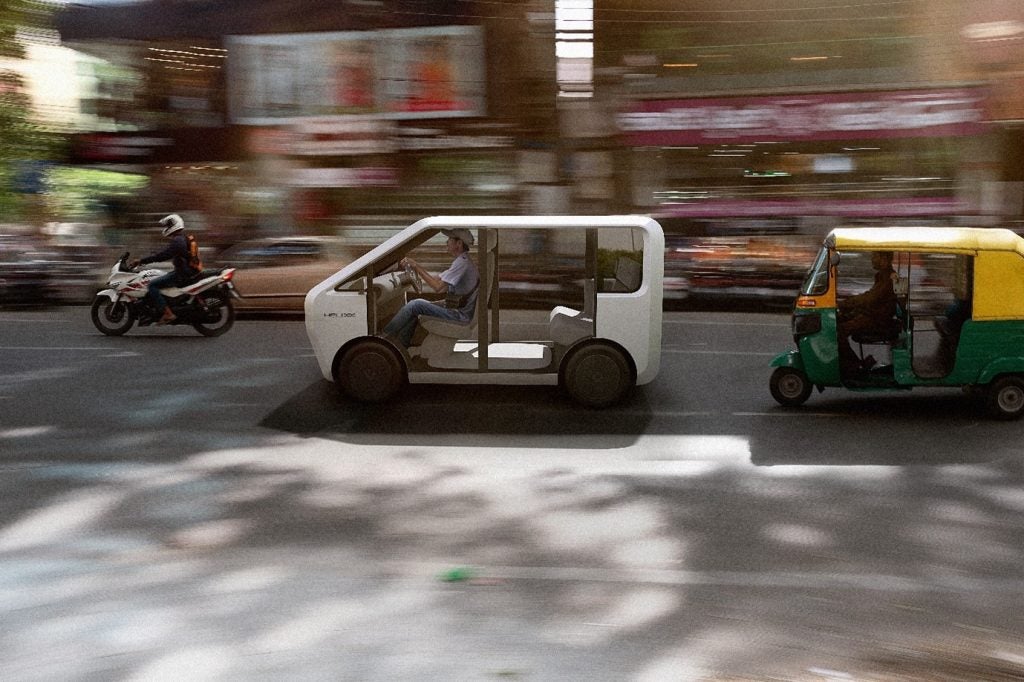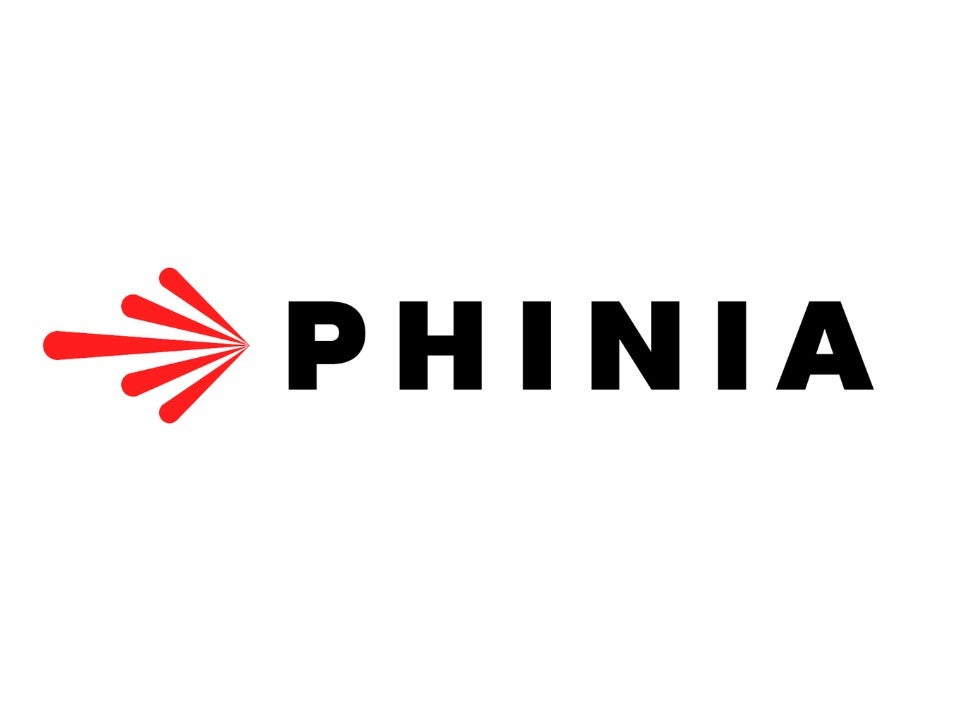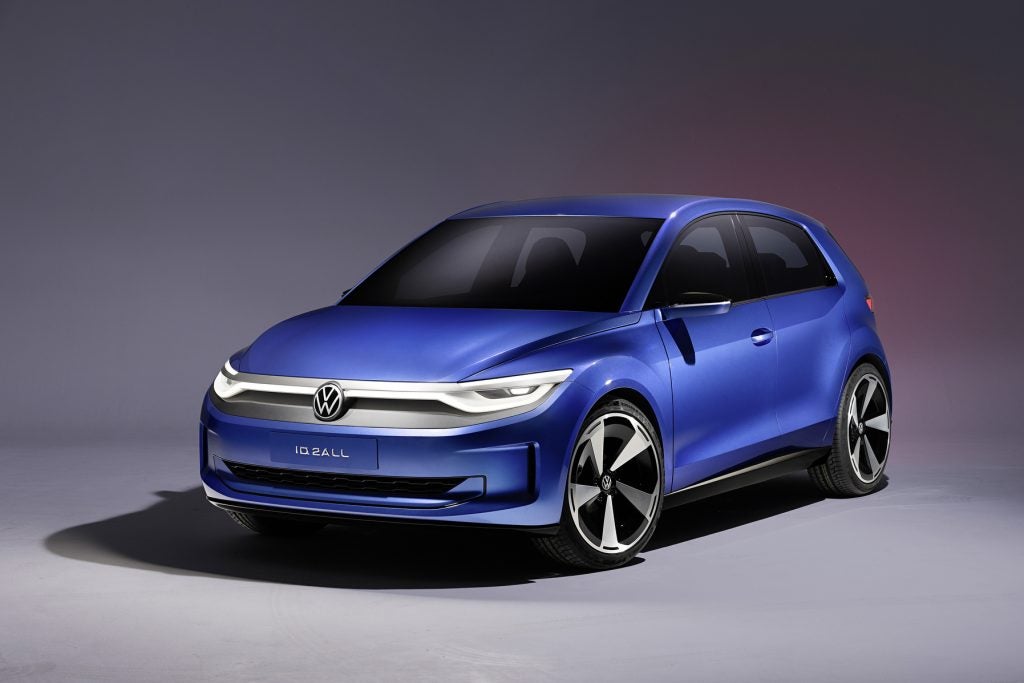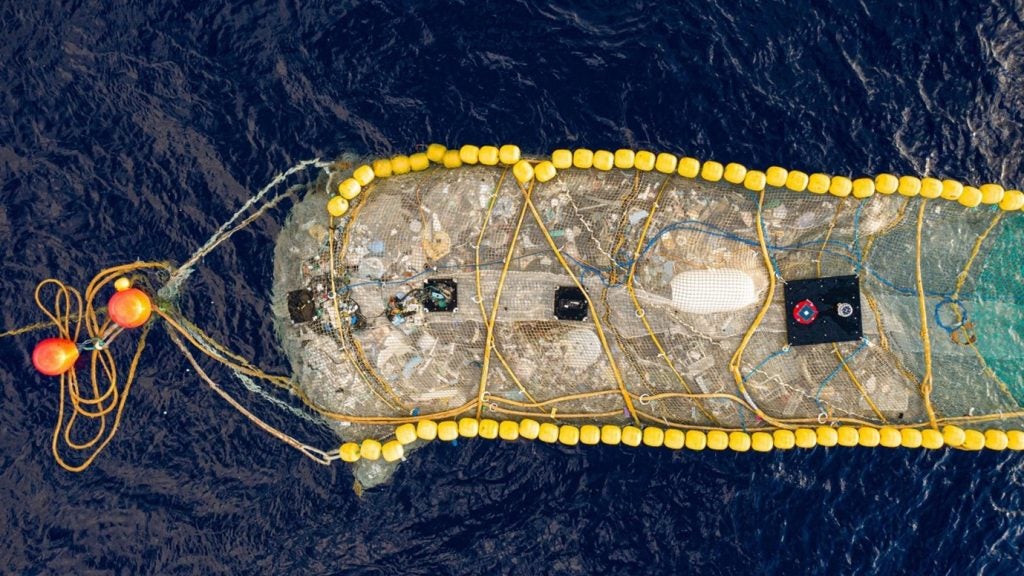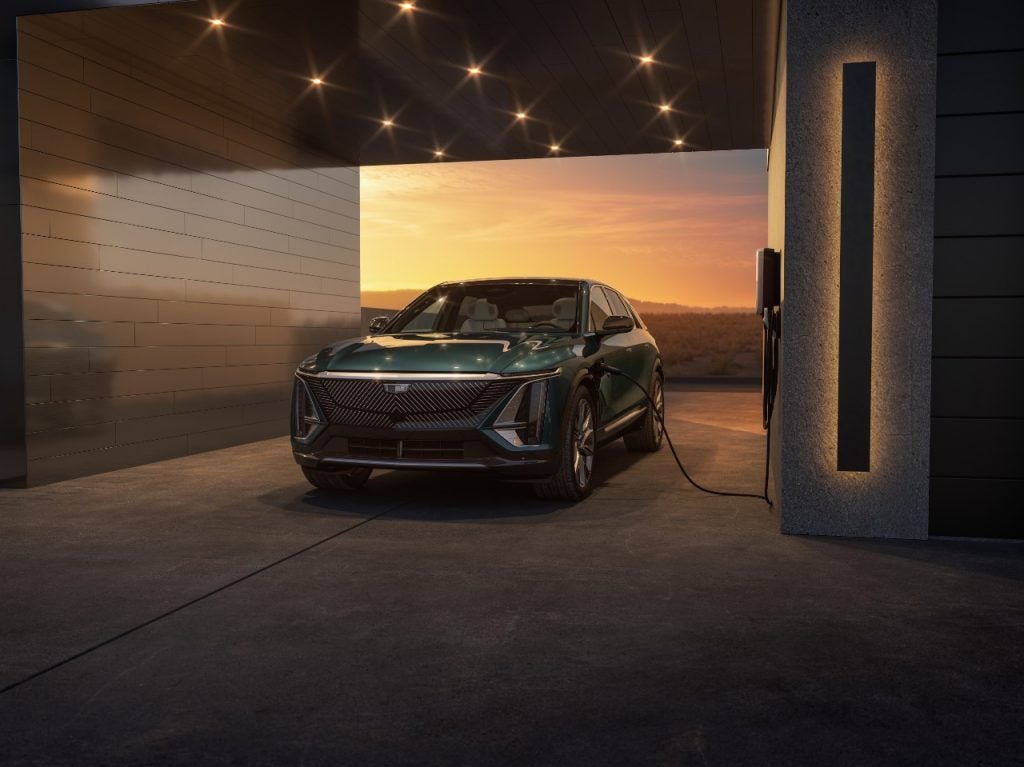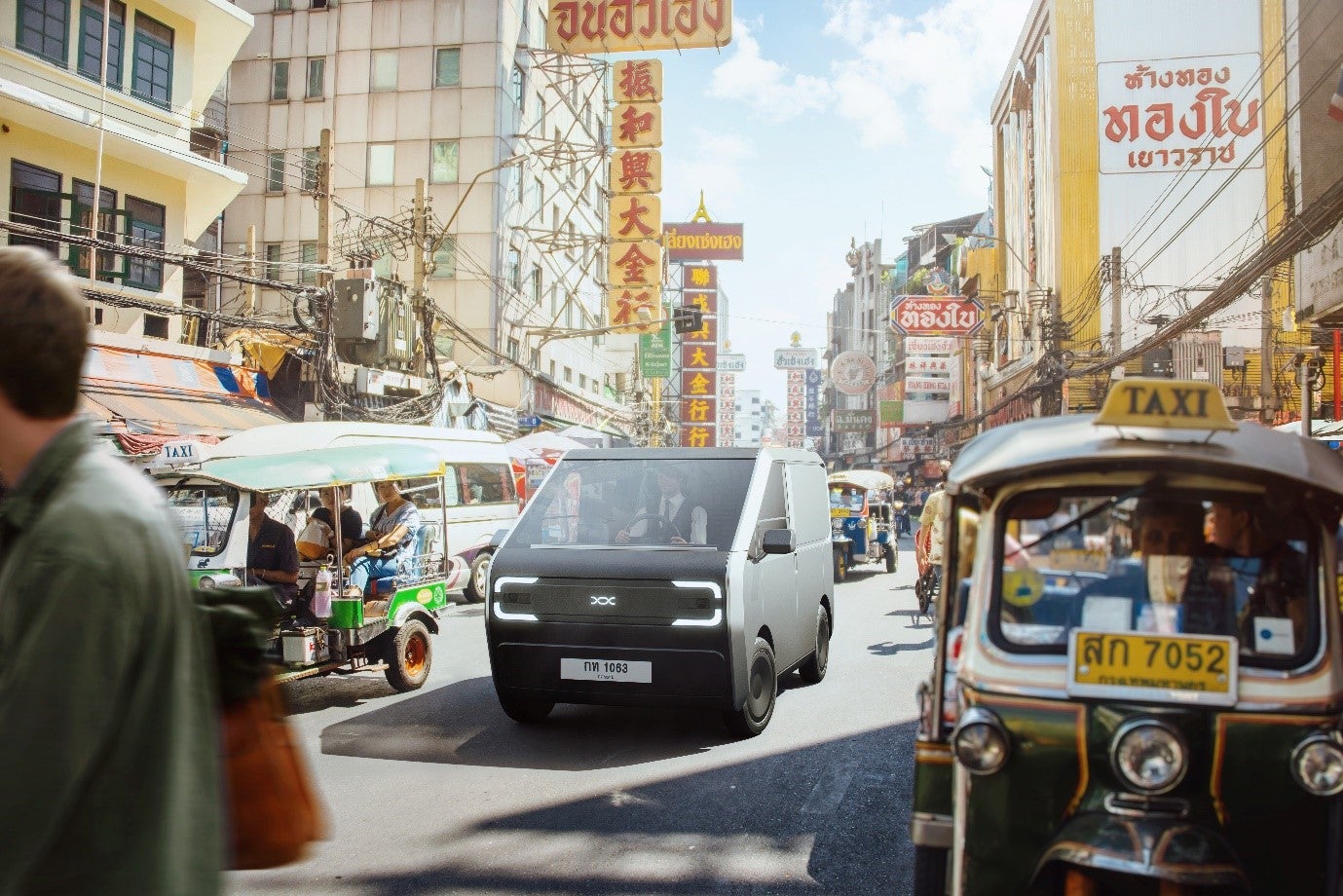
Founded in 2022, UK-based start-up Helixx has developed a ‘factory in a box’ that it claims delivers low-cost EVs in 180 days, with a primary focus on Asia-Pacific markets.
It says pilot hubs established in the UK and Singapore will aim to produce 10,000 white label vehicles by 2025.
Helixx’s vehicle range will comprise a CARGO commercial delivery van, TRUCK pick-up, an open-body TUK and closed-body RIDE for ride-hailing.
Earlier this year it was announced that Helixx had selected Siemens Xcelerator as its ‘digital twin’ technology provider, that would help Helixx design its Mobility Hubs as well as plan its supply chain needs.
We spoke to CEO and co-founder Steve Pegg about the Helixx concept and its future plans.
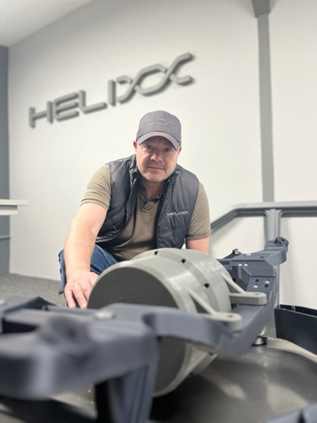
Just Auto: Tell us a bit about yourself and your journey into the auto industry.
Steve Pegg: I’ve worked around the world in many OEMs in many capacities, such as design and enterprise software.
In 2016, I left Land Rover Studios and was offered a job at Faraday Studios. There I headed up the advanced concepts team, and my task was to look at what the future of mobility-as-a-service could be, because back then it was a new thing. It [service mobility] made absolute sense in terms of where electrification could go.
My focus was on ride-hailing and ride-share. I got deep into my research in first-mile and last-mile deliveries, the things that were going to alleviate traffic and reduce vehicle ownership levels.
My research – even though it was focused in the US – took me to the other side of the world to Asia Pacific and to densely populated cities. There mobility as a service isn’t a ‘thing’ – it’s just life. They haven’t got legacy vehicle ownership and they don’t want it. They want to transport people and goods.
There has been a huge push for electrification and BEVs, but in these cities, there was no way they were going to be able to take large numbers of electric vehicles because there was very little or none of the electrical charging stations infrastructure there.
Following on from that, what is the story of Helixx?
My team and I approached the business in an upside-down way: we didn’t start with the vehicle, we started with scalability. We saw the [start-ups] Rivians, the Arrivals struggling with scale because of the capital-intensive nature of industrialisation.
We knew this was hard. How do we build a business we can scale? What can we do to absolutely reduce the capitalisation and make it as sustainable as possible? Especially with Covid and the war in Ukraine, these things are even more important as the supply chain has been hit hard.
The world knows how to build vehicles and the world builds fantastic vehicles – what we didn’t want to do was copy that. We knew that carbon count is important, and there is huge business on carbon credits. Going forward, that carbon credit is likely with regulation to expand into scope three emissions.
We looked at the licensing side – for us the challenge was how to apply that to large scale volume manufacturing.
Before we even designed the vehicle, we had some very clear targets on market positioning.
It was only ever going to a B2B vehicle. It was only going to be for cargo, goods and people delivery.
What sort of vehicle would we need to build in our licensed factories? An interesting hypothetical question I posed to the team was: “If Jeff Bezos was to launch a ride hailing business and you could travel anywhere in the city in 1-2 miles, what would that vehicle have to look like?”
From a licensing perspective, we knew we wanted to create factories that were local. The next big challenge was how to deliver a supply chain to achieve that. Our customers aren’t expected to find their own suppliers and build their own equipment – we do all that for them. That was key for us.
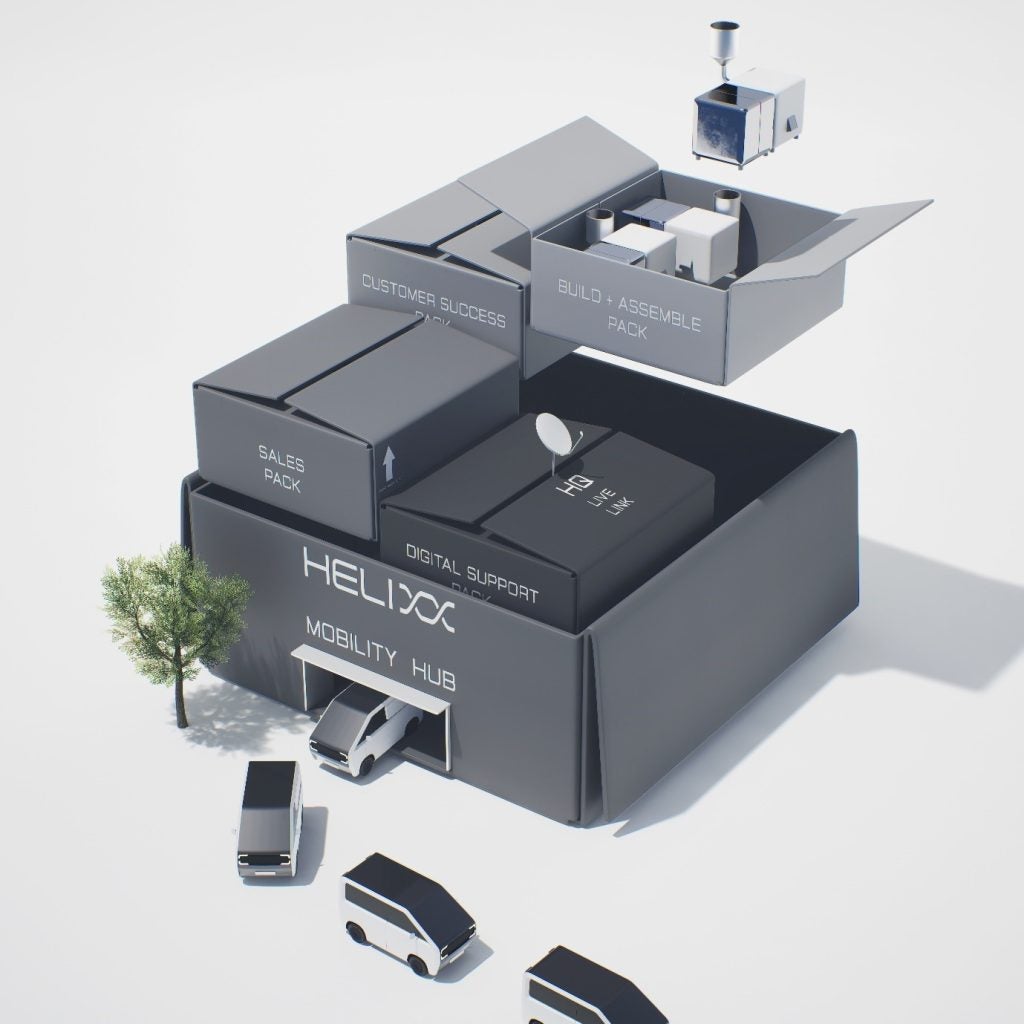
The Hub has been described as the ‘factory of the future’ – what are the key standout points?
We knew that to deliver a factory in 180 days, we can’t just go back to the standard way of designing a factory. For us, it was making sure our factories – regardless of where you put them in the world and variable labour costs – the factory would have consistency of output, cost and quality.
Our factories don’t demand low cost to get cost-effectiveness. What we have to do is make sure each process actually reduced the workload in whatever aspect, be that automation or people. By doing that it reduced the required energy consumption and operational costs.
Traditionally the vehicles we are building aren’t built in high volumes, typically because there’s a lot of manual process involved.
What Helixx has done is build a body structure system that doesn’t require pressing or welding. It’s a polymer that comes out ready to assemble. This is essentially the only automated process in the business. It’s revolutionary in that respect.
Everything we do here is built on our tech stack [using Siemens Xcelerator] and every interaction with our licensees is based around the tech stack – that is the only way were going to be able to manage a factory on the other side of the world. That’s a really important part of it.
Prospective customers will want to inspect the vehicles before committing – demonstration versions were planned for April/May. Have they been built yet?
We are in the final stages of getting that ready. We’re just waiting for some of our key suppliers to do technical analyses. Once it’s all complete it will be rolling out of the workshops ready to demonstrate across the world.
We’ve had an overwhelming level of interest – our key targets for these licenses were in Asia-Pacific, but we’ve had interest from every single continent on the licensing side.
On the vehicle side, we’re working with UK local authorities to get our first prototype to run in 2024. We’ve had a lot of enquiries internationally for those vehicles, also. A lot of people have reached out wanting to help, including investors. We’ve also had a few OEMs reach out, so we’re on their radar, too.
You mentioned investors there – do you have any plans for an IPO?
It’s early days. The first thing we’ve got to do is get the right products into the marketplace and fulfil all the promises we’re making for sustainable and all of the positive aspects it can bring to local enterprise. If we achieve that, then the world will see the value of Helixx.
